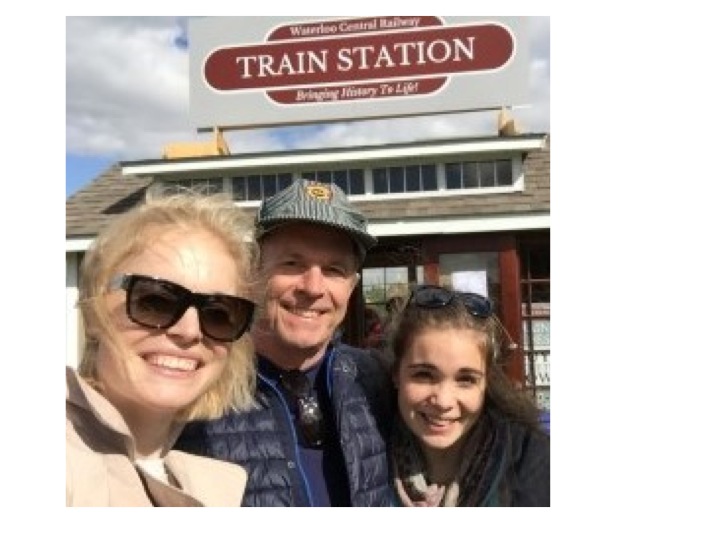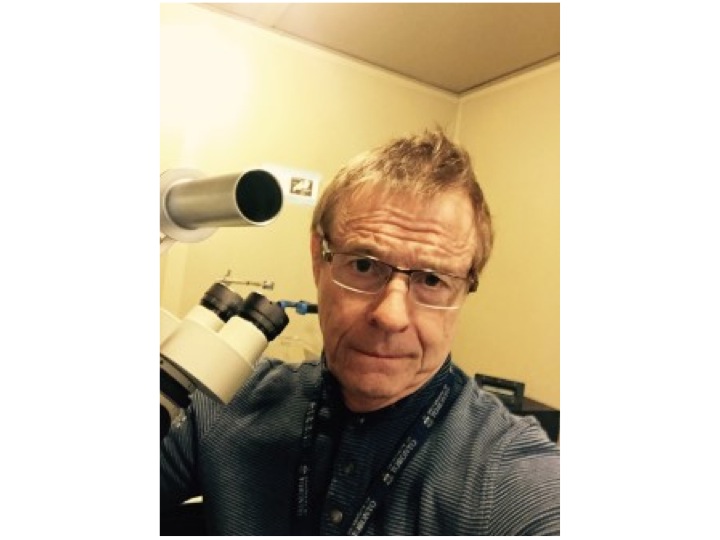So… Who is Bob Harrison?

Bob Harrison has a new column with Canadian Audiologist that serves to assist in translational work From the Labs to the Clinics…. That’s actually the name of his column too. Go figure! We caught up with Bob recently, and here is what he had to say:
Q1: When did you first become involved with issues relating to hearing loss?
Bob Harrison (BH): Back in 1973 I started my PhD research on “The effects of haircell loss on cochlear function”. I could have titled my thesis “What happens to hearing in sensorineural hearing loss”, but I was doing this work in guinea pigs, and at the time I thought that might have been a bit of a stretch. However, since then I have always made the extrapolation from animal models to humans.
Q2: What made you continue on to research more about hearing and hearing loss mechanisms?
BH: Over many years I have used animal models to increase our understanding about normal hearing and hearing loss in humans. A short list of the models that I have investigated includes drug ototoxicity, endolymphatic hydrops, noise trauma, chronic hypoxia (that is a model for ANSD), and most recently cytomegalovirus (CMV) induced hearing loss.
Q3 What positions do you presently hold at the University of Toronto and at SickKids hospital?
BH: I work primarily as a neuroscientist at the Research Institute at SickKids. My primary university appointment is in the Department of Otolaryngology – HNS, where I am vice chair – research. Here I became familiar with all aspects of hearing health care – audiology, otology, SLP, etc. As a research scientist, I also have appointments in other university groups including physiology, biomedical engineering, medical sciences, and the Faculty of Music.

Q4: You have worked in other countries, and had clinicians and scientists from all over the world working with you. What have you learned from those experiences?
Yes, I have studied in many laboratories overseas (France, Holland, Sweden, UK), and have hosted numerous international trainees in my lab. From a purely research perspective, international exposure is the norm; science crosses (almost) all geographical boundaries. However, it is interesting how hearing health care is delivered differently across the world. In some countries audiology is tightly integrated with otology, in others not so much. In some countries audiology is a long established clinical specialty, in some countries not so. I was recently in Beijing at an inaugural meeting of (foreign trained) Chinese audiologists working to establish, for the first time, audiology as a recognized profession.
Q5: Your research topics, over four decades, have focused on many types of hearing problem. What do you consider to be your most important scientific contributions?
BH: In general, science works to gradually build up our knowledge and understanding of health and disease. In that sense, most researchers will only claim that they have contributed to the understanding of a disorder or curing a disease. In that way, I am proud to note my contributions to understanding, for example, some causes of auditory neuropathy, tinnitus generation, and CMV related hearing loss. In addition to the etiology and pathogenesis of hearing loss, I have also studied the consequences of having middle and inner ear damage. My original thesis work revealed the loss of cochlear frequency analysis that that occurs when (outer) haircells degenerate. Related to this I have also discussed the underlying causes of loudness recruitment. Importantly I have studied the plasticity of the developing auditory brain and how damage to the cochlea at an early age can significantly change the wiring of central auditory pathways. This work on developmental plasticity has huge implications on early detection and intervention in infants with congenital or pre-lingual hearing loss.
Q6: I know that you have also been involved in many clinical studies, and “translational research” projects that are very relevant to clinical audiology. Can you describe some of these studies?
Before I was recruited to Canada, I worked in France and did a body of work using electro-cochleography for objectively measuring various aspects of cochlear function in patients. In North America, this clinical tool has not been very popular. However, I predict that there will be resurgence of interest. We need new ways to distinguish different types of ANSD. We need diagnostics to probe “hidden hearing loss” – that is spiral ganglion cell degeneration that is caused and persists after noise trauma even when haircell function recovers. Electro-cochleography may be the key! A very important part of my clinical research has revolved around cochlear implantation. Indeed, I was recruited to Canada in large part because of my interest in this field. I established (in 1989) the pediatric cochlear implant program at SickKids, and initiated much of the research program that is now associated with our group. I was also very much involved in the push to get newborn hearing screening implemented in Ontario. I continue my interests in developing novel diagnostic techniques in audiology, for example the use of contralateral modulation of otoacoustic emissions.

Q7: As a university professor, you have been involved in teaching and education relating to basic and applied audiology. When did that teaching start? What lecturing are you currently doing?
BH: For many years, starting in 1984 when I first joined the University of Toronto, I taught auditory science to undergraduates, postgraduates and clinical residents. In the Faculty of Medicine, I was one of very few professors teaching basic hearing sciences. There is no audiology program at U of T, despite repeated efforts by myself and others to establish one. However, I will note that our Canadian needs are admirably served by excellent programs at Western, Dalhousie, Ottawa, and UBC. Currently, and ironically most of my teaching efforts are now aimed at audiology trainees outside of my university. I am on faculty at SALUS University in Philadelphia, and contribute to many online courses and summer workshops for their school of audiology. What I really like about online teaching is that my audiology students are literally from all over the world.
Q8: You have been at the University of Toronto for over 30 years, and I know that you have supervised many graduate students, including some audiologists, in their thesis research. Can you comment on any of your trainees that have gone on to leadership roles in audiology and/or otology fields?
BH: Yes, I have supervised a number of audiologists working to complete PhD degrees (I will not name them all here). I have also supervised many graduate trainees who have gone on to academic careers in auditory science, and I have trained numerous MD residents and fellows who now have leadership roles as hearing health care professionals. For the most part, I think that I have “made my mark.”

Q9: Where do you see the field of audiology in 10 years’ time?
BH: That is a difficult question; I know where I would like to see audiology in the future. As a scientist, I have been immersed in the “high end’ of audiological sciences. I see all of the innovations and progress in understanding how the ear and the auditory brain works. I follow all the new developments in haircell regeneration, and the development of new hearing prostheses. I have witnessed great changes in understanding the genetic causes of hearing loss. My hope is that most of this new knowledge will become incorporated into clinical audiology. Today, many audiologists are the field leaders in specialized areas such as early hearing loss detection and intervention (including hearing aid fitting). Experienced audiologists are essential in cochlear implant programs both adult and pediatric. In my team at SickKids, the audiologists ARE the experts! I would like to see audiologists become the field leaders in dealing with the genetics of hearing loss, and in using brain imaging techniques to understand the central auditory changes that underlie hearing problems (e.g., “effort in hearing”; the links between hearing loss and dementia). In short I hope that audiologists will not only be the essential technologists in hearing evaluation, but will take complete charge of the management of patients with hearing problems.

